Gardener Pratts Bottom: Your Comprehensive Guide to a Thriving Garden
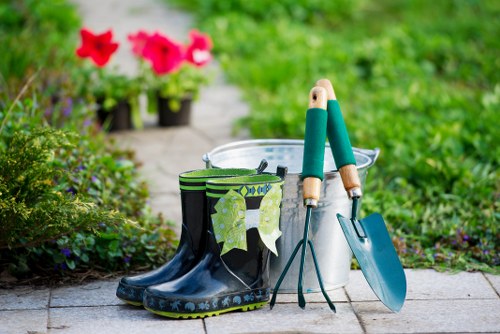
Gardening in Pratts Bottom offers a unique blend of challenges and rewards. Whether you're a seasoned gardener or just starting out, understanding the local climate, soil types, and plant varieties is essential for creating a beautiful and sustainable garden.
Pratts Bottom, nestled in the heart of Surrey, boasts a temperate climate that is ideal for a wide range of plants. From vibrant perennials to hardy shrubs, the area's conditions support diverse gardening endeavors.
One of the first steps to successful gardening in Pratts Bottom is soil preparation. The quality of your soil determines the health and growth of your plants. Conducting a soil test can help identify any deficiencies and guide you in making necessary amendments.
Understanding the Local Climate
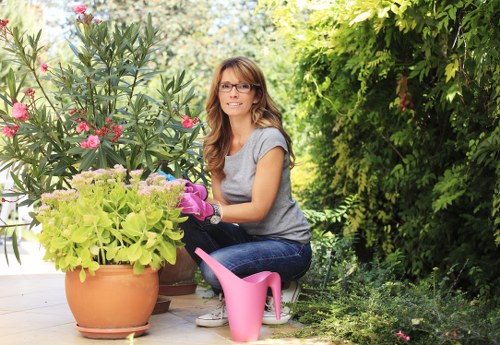
The climate in Pratts Bottom is characterized by mild winters and warm summers, providing an extended growing season. This allows gardeners to cultivate a variety of plants that might not thrive in harsher conditions.
Rainfall is evenly distributed throughout the year, reducing the need for extensive irrigation systems. However, during the summer months, occasional dry spells may require supplemental watering to maintain plant health.
Frost can occur in late autumn and early spring, so it's important to protect sensitive plants during these periods. Using frost cloths or relocating potted plants can help prevent damage from unexpected cold snaps.
Choosing the Right Plants
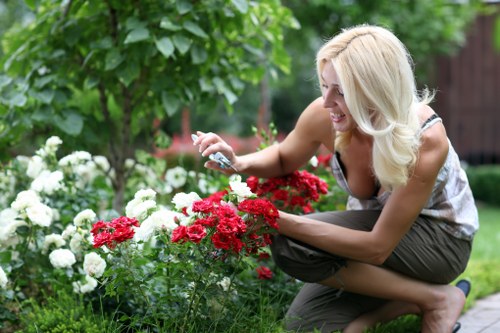
Selecting plants that are well-suited to Pratts Bottom's environment will enhance the success of your garden. Native plants, in particular, are adapted to local conditions and often require less maintenance.
Consider incorporating a mix of annuals and perennials to ensure year-round color and interest. Flowers such as lavender, daisies, and roses are popular choices among local gardeners.
Vegetable gardens also thrive in this region. Tomatoes, lettuce, and carrots can be grown successfully with proper care and attention to spacing and sunlight requirements.
Soil Health and Fertilization
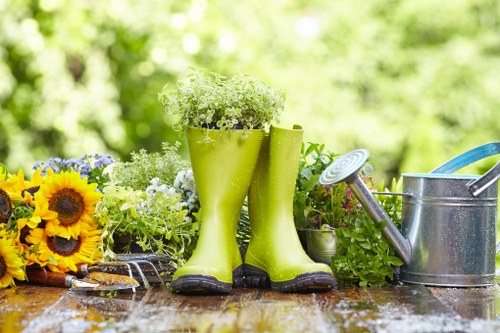
Maintaining healthy soil is crucial for a vibrant garden. Organic matter, such as compost and well-rotted manure, can improve soil structure and fertility.
Regularly adding mulch helps retain moisture, suppress weeds, and regulate soil temperature. This not only benefits your plants but also reduces the need for frequent watering.
Fertilization should be tailored to the specific needs of your plants. Conducting soil tests can provide valuable insights into nutrient levels, allowing you to apply fertilizers more effectively.
Irrigation Techniques
Efficient watering practices are essential for conserving water and ensuring that your plants receive the right amount of moisture. Drip irrigation systems are highly recommended for their precision and water-saving capabilities.
Watering in the early morning minimizes evaporation and allows plants to absorb moisture before the heat of the day. Additionally, using rain barrels to collect and store rainwater can provide an eco-friendly water source for your garden.
Proper drainage is equally important. Ensuring that excess water can flow away from plant roots prevents issues such as root rot and fungal diseases, promoting overall plant health.
Local Gardening Resources
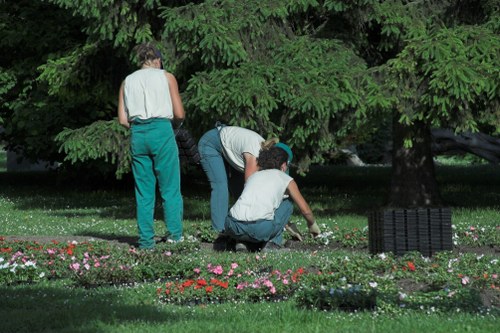
Pratts Bottom is home to several gardening resources that can support both novice and experienced gardeners. Local nurseries offer a wide selection of plants, tools, and expert advice tailored to the area's specific conditions.
Community gardens provide opportunities for collaboration and learning. Participating in these communal spaces can help you gain new techniques and connect with fellow gardening enthusiasts.
Workshops and classes are frequently held, covering topics such as organic gardening, landscape design, and pest management. These educational opportunities can enhance your gardening skills and keep you informed about best practices.
Top 10 Nearby Areas for Gardening Enthusiasts
- Guildford: A vibrant town with numerous botanical gardens and gardening events.
- Weybridge: Known for its beautiful parks and community gardening projects.
- Woking: Offers a variety of gardening centers and annual flower shows.
- East Horsley: Features expansive green spaces and historic gardens.
- Virginia Water: Home to the stunning Virginia Water Lake and surrounding gardens.
- Chertsey: Boasts well-maintained public gardens and local nurseries.
- Staines-upon-Thames: Offers riverside gardens and numerous planting events.
- Byfleet: Known for its botanical diversity and community-led garden initiatives.
- Greenford: Features contemporary garden designs and sustainable gardening practices.
- Weybridge: A hub for gardening workshops and extensive plant nurseries.
Common Gardening Challenges in Pratts Bottom
While gardening in Pratts Bottom is rewarding, it does come with its set of challenges. Pests such as aphids and slugs can damage plants, necessitating regular monitoring and control measures.
Disease management is also critical. Fungal infections like powdery mildew require timely intervention to prevent widespread damage.
Additionally, ensuring that your garden remains sustainable involves practices such as composting, rainwater harvesting, and the use of eco-friendly fertilizers.
Effective Pest Control
Integrated Pest Management (IPM) is an effective approach to controlling pests in your garden. This strategy emphasizes prevention, using natural predators, and minimizing chemical interventions.
Introducing beneficial insects like ladybugs can help keep pest populations in check. Regularly inspecting your plants allows for early detection and treatment of infestations.
Using organic pesticides when necessary ensures that you protect your garden without harming the environment.
Diseases and Their Management
Proper plant care is essential in preventing diseases. Ensuring adequate spacing between plants improves air circulation, reducing the likelihood of fungal growth.
Removing and disposing of infected plant material helps prevent the spread of diseases. Additionally, rotating crops each season can break disease cycles and maintain soil health.
Applying fungicides as a preventive measure during high-risk periods can also protect your plants from potential outbreaks.
Sustainable Gardening Practices
Adopting sustainable gardening practices not only benefits the environment but also enhances the resilience of your garden. Techniques such as companion planting and crop rotation improve soil fertility and reduce pest issues.
Composting organic waste transforms kitchen scraps and garden debris into valuable nutrients for your plants. This practice reduces landfill waste and minimizes the need for synthetic fertilizers.
Rainwater harvesting systems capture and store rainwater, providing an eco-friendly irrigation source that conserves water and reduces utility costs.
Gardening Tools and Equipment
- Hand Tools: Essential for planting, weeding, and pruning.
- Power Tools: Such as lawnmowers and trimmers for maintaining larger garden areas.
- Watering Systems: Including hoses, sprinklers, and drip irrigation setups.
- Soil Test Kits: For analyzing soil composition and nutrient levels.
- Composting Bins: To facilitate the recycling of organic waste into compost.
Choosing the Right Tools
Investing in high-quality gardening tools can make a significant difference in the ease and efficiency of your gardening tasks. Ergonomic designs reduce strain and increase comfort during prolonged use.
Sturdy materials ensure durability, allowing your tools to withstand regular use and various weather conditions. Proper maintenance, such as regular cleaning and sharpening, extends the lifespan of your tools.
Selecting tools that match your specific gardening needs enhances productivity and helps you achieve the desired results more effectively.
Storage and Maintenance
Proper storage of gardening tools prevents rust and damage, ensuring they remain in good condition. Dedicated storage sheds or toolboxes keep your equipment organized and easily accessible.
Regular maintenance routines, including cleaning after use and periodic inspections, help identify and address any issues early on. Sharpening blades and oiling moving parts are simple yet effective maintenance practices.
Organizing your tools systematically reduces clutter and makes it easier to find what you need when you need it, promoting a more efficient gardening experience.
Advanced Gardening Techniques
Exploring advanced gardening techniques can elevate your gardening skills and yield better results. Methods such as grafting, propagation, and hydroponics offer innovative ways to cultivate plants.
Vertical gardening maximizes space utilization, making it an excellent option for small gardens or limited areas. This technique involves growing plants upwards using trellises, shelves, or specialized structures.
Permaculture principles focus on creating self-sustaining ecosystems that mimic natural processes. Implementing these practices fosters biodiversity and enhances the resilience of your garden.
Conclusion
Gardening in Pratts Bottom is a fulfilling endeavor that combines creativity, patience, and knowledge. By understanding the local climate, selecting appropriate plants, and adopting sustainable practices, you can cultivate a thriving garden that brings joy and beauty to your environment.
Utilizing local resources, overcoming common challenges, and investing in the right tools will set you on the path to gardening success. Whether you're nurturing a small balcony garden or tending to a spacious backyard, the principles outlined in this guide will help you achieve your gardening goals.
Embrace the gardening community in Pratts Bottom, share your experiences, and continue to learn and grow alongside fellow enthusiasts. With dedication and passion, your garden will flourish, becoming a testament to your hard work and love for nature.
Frequently Asked Questions
- What is the best time to start planting in Pratts Bottom?
The best time to start planting in Pratts Bottom is in early spring after the last frost. This allows plants to establish before the warmer summer months.
- How can I improve soil quality for my garden?
Improving soil quality can be achieved by adding organic matter such as compost, practicing crop rotation, and conducting regular soil tests to adjust pH and nutrient levels.
- What are some native plants suitable for Pratts Bottom gardens?
Native plants like lavender, daisies, roses, and certain shrubs thrive in Pratts Bottom's climate and require less maintenance once established.
- How do I manage pests naturally in my garden?
Managing pests naturally can be done through integrated pest management, introducing beneficial insects, using organic pesticides, and maintaining plant health through proper care.
- What resources are available for gardeners in Pratts Bottom?
Gardeners in Pratts Bottom can access local nurseries, community gardens, workshops, and online resources to gain knowledge, tools, and support for their gardening projects.

